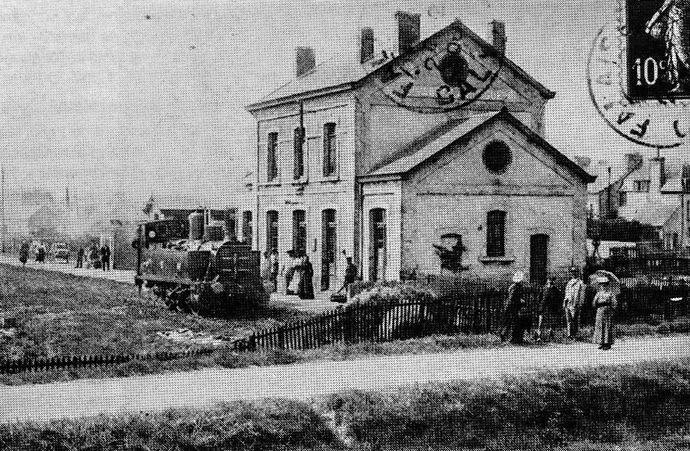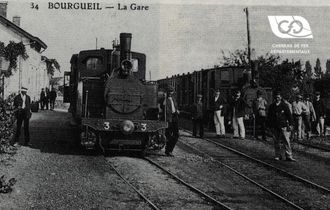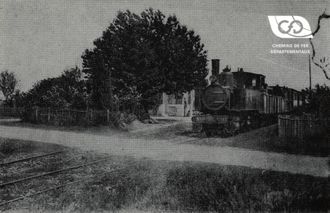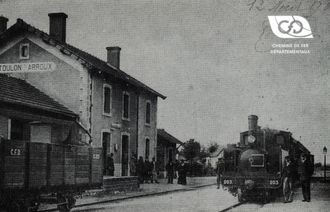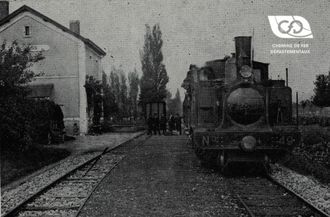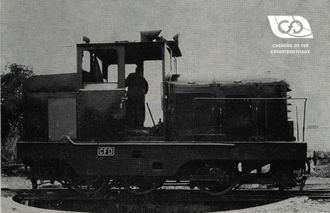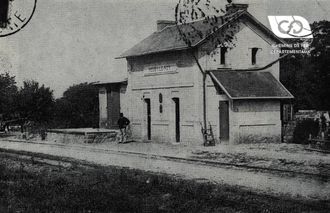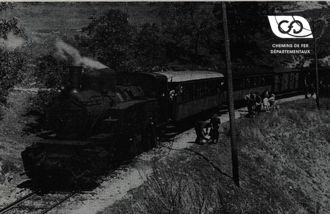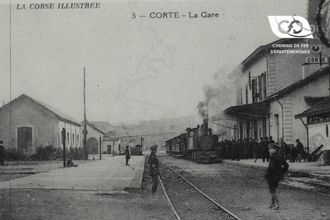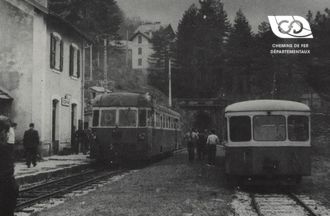Three-axle locomotives
Ordered in 1883 from Schneider in Le Creusot, these locomotives, type 101 of the manufacturer, were intended to operate on the Channel network on normal track
Description of the three-axle locomotives type Manche
Their three-tube boiler consisted of a furnace placed in line with the third axle and a cylindrical body of 1.76 m in diameter composed of a bundle of 148 tubes of 0.045 m in diameter.
The bulky dome carrying the balance valves was located on the second ferrule and the sand tank on the first. The smoke box door was double-leafed, but this was replaced by a round door after 1900 as they passed through the G.R.
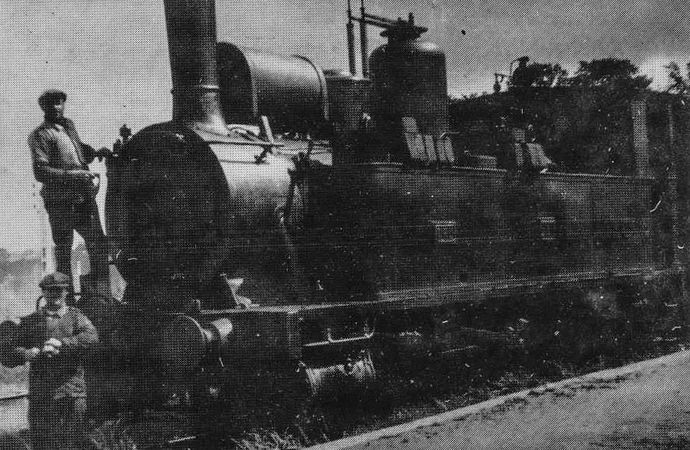
The distribution was Stephenson type and the power take-off was on the centre axle by means of a double eccentric.
The primitive shelter, reduced to a roof supported by four small columns, was quickly closed by metal sheets pierced by two circular portholes placed at the front and rear of the driver's cabin. The sides were also closed off, leaving free access between the two columns.
The decoration of these machines was identical to the Indre-et-Loire units. The marking consisted of the affixing of rectangular bronze plates on the water boxes. One had the number and the other the initials of the Company.
